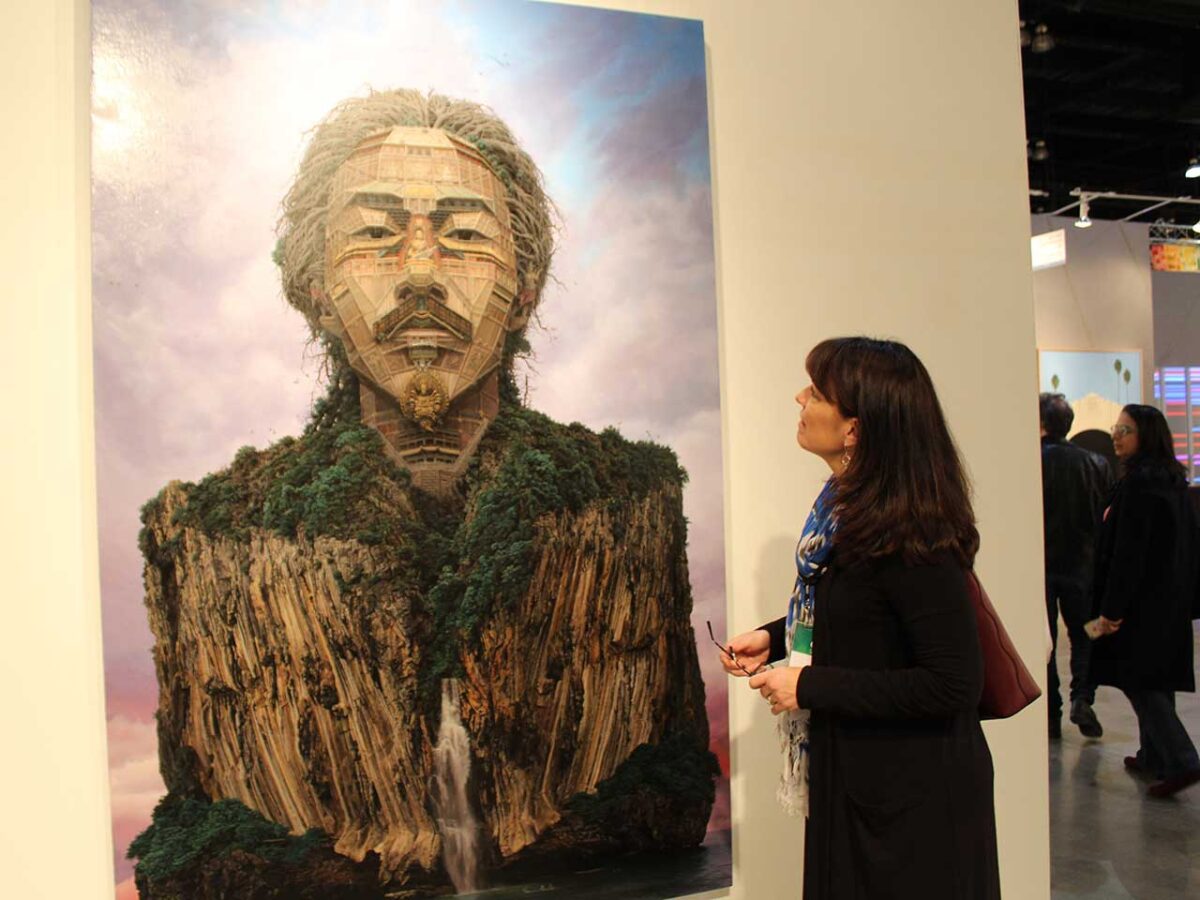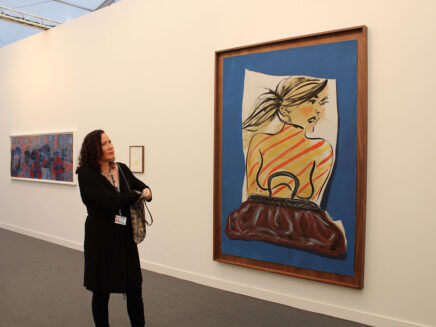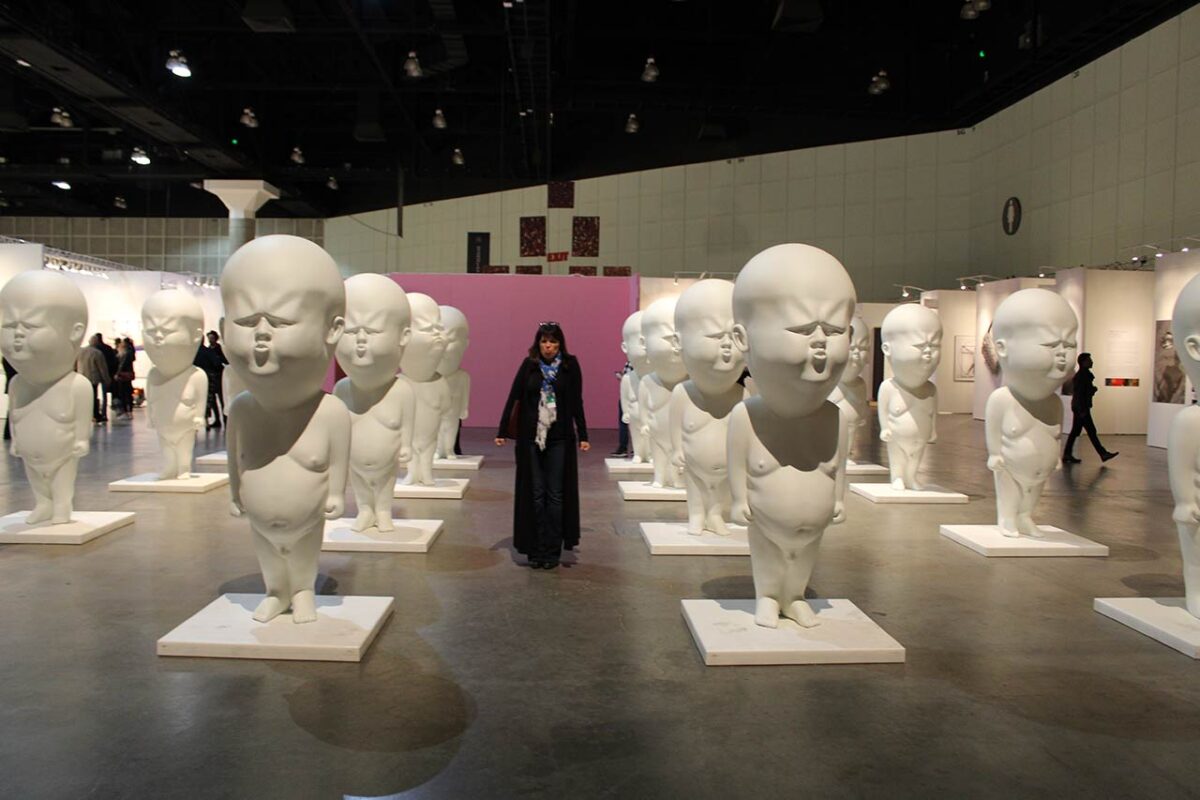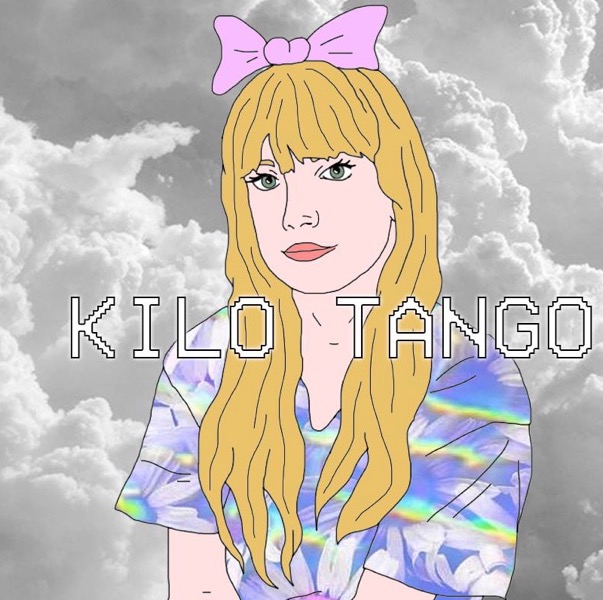
by Natalie Durkin
I arrive an hour prior to have a pre-show chat with Katie Mitchell, Kilo Tango’s frontwoman. I approach Katie at the bar where she’s with her friend and bassist, Caitlin Dee. She lights up like her fiery red hair and gives me a warm hug when I say, “Are you Katie?” We step outside to talk, Dee in tow. Mitchell tells me about her cottage cheese addiction, the café in Echo Park that has her heart, and how to do what you love and survive the meltdowns that come with it.
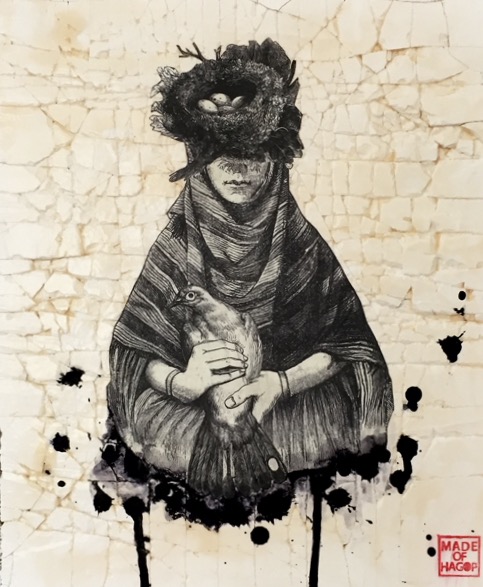
by Hattie Xu
Peace Dove is symbolic of the Great Mother and shares her connection to the divine with the world. She assists in the surrender of earthly burdens to spirit, and she is in the deepest sense, a messenger of peace. She restores balance and harmony during times of turmoil and trouble.
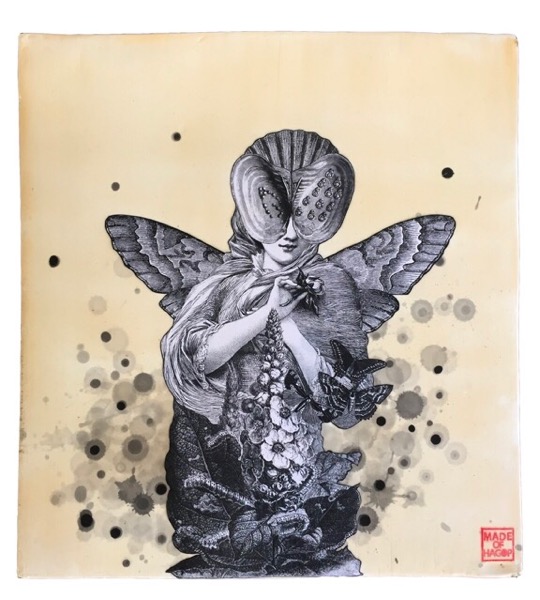
by Hattie Xu
“Meta” is the patron saint of Resurrection and symbolizes the great cycles of transformation in life. Like the lotus blooming from the mud, she demonstrates that things of magnificent beauty are born from the depths of darkness. Rooted in the elements of earth and water, she is the embodiment of the divine feminine; while her wings lift her from the material world and represent her connection to the light.
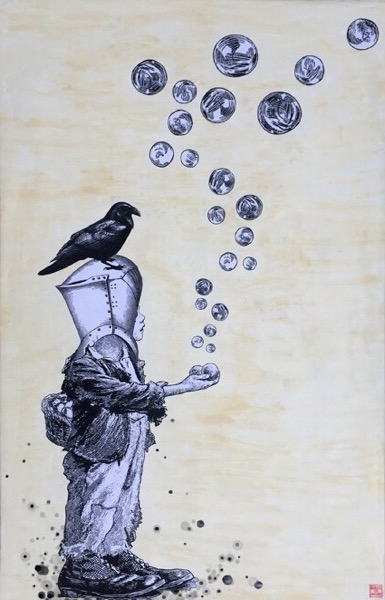
by Hattie Xu
“Innocent” serves as a reminder that magic always surrounds us and that we must believe in our own power. It is a symbol of purity dedicated to all children of the world, dealing with war, injustice and pain.
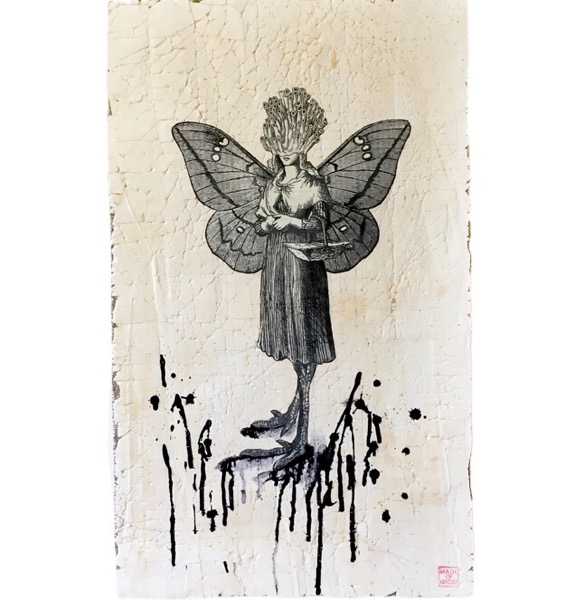
by Hattie Xu
Faerie embodies the serenity and wisdom of patience at the same time holding an innovative vision of the world. Her unique and clever sensibility makes her a master navigator, able to move swiftly with the turnings of the tide. She teaches not to judge a book by its cover, because things are not always as they seem.
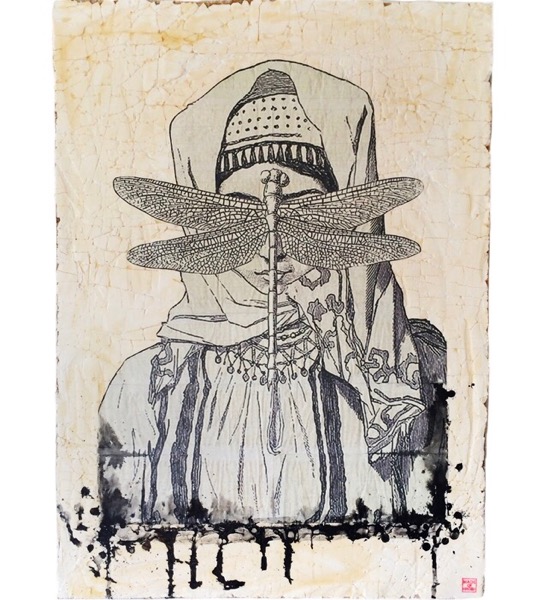
by Hattie Xu
One of Hagop’s “Aristocrats” paintings is a woman wearing a draping headscarf and an embroidered blouse. Her features are pretty and delicate, with small petal lips and thin brows. But this is not just a depiction of a Middle Eastern woman—a large dragonfly with its wings spread obstructs the view of most of her face. “Metaphysically, the dragonfly represents the breaking of an illusion, and the fact that it’s over her eyes [shows] the breaking of the illusion of the Middle Eastern woman.”







